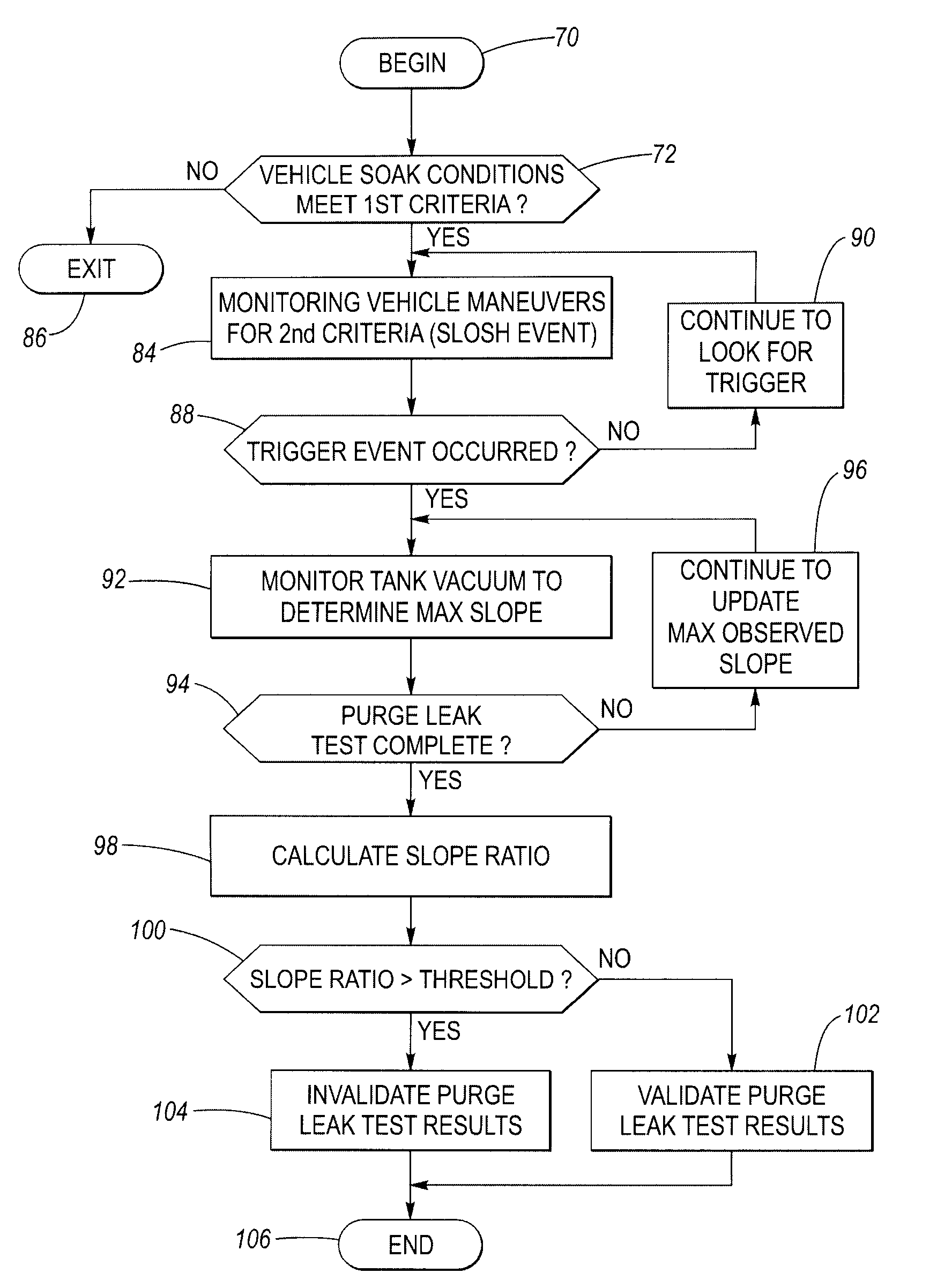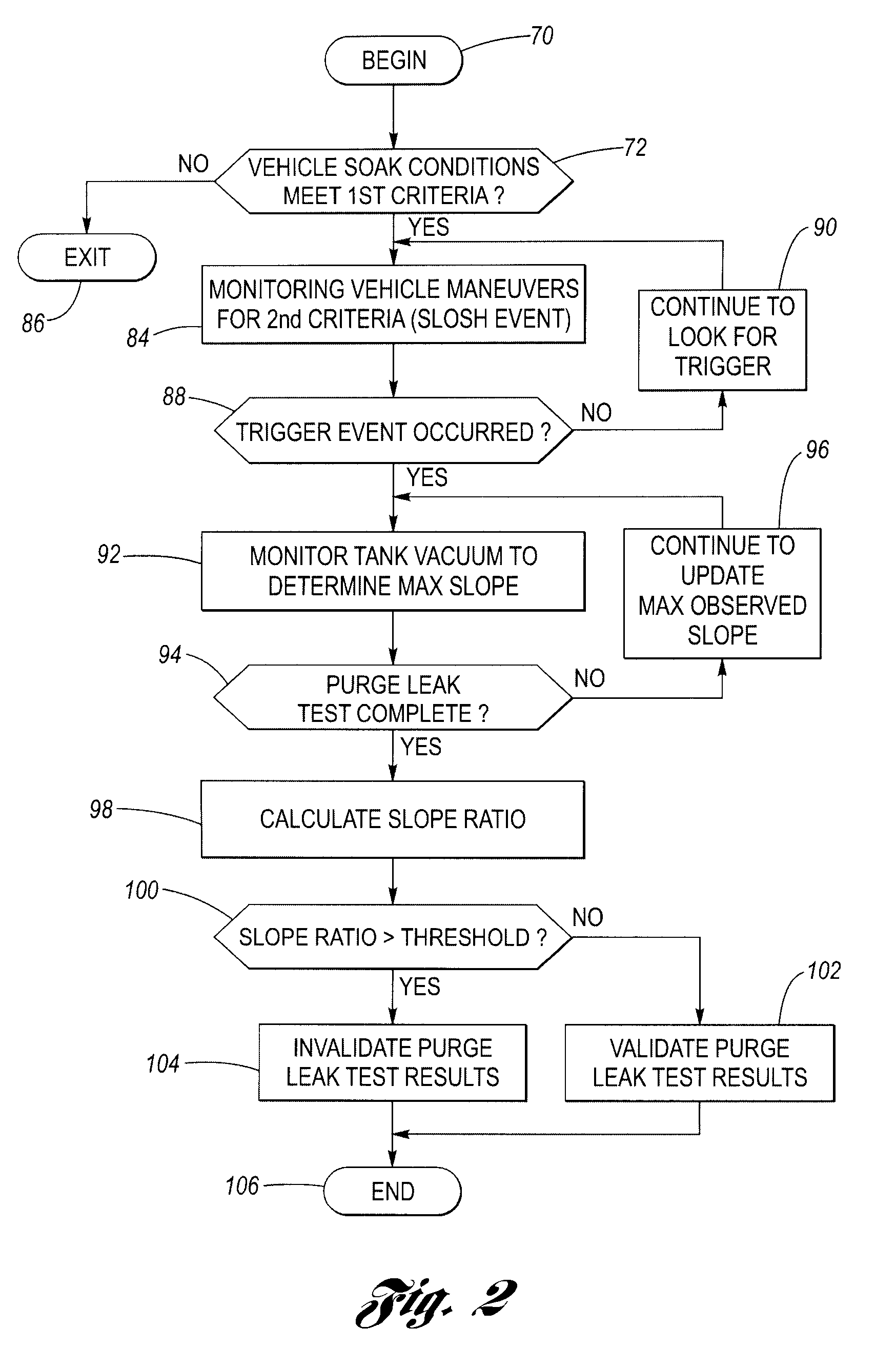Method of validating a diagnostic purge valve leak detection test
a purge valve and leak detection technology, applied in the field of vehicle diagnostics, can solve the problems of false failure test, fuel slosh or turbulence in the fuel tank, and achieve the effect of reducing or eliminating false failures and large increase over a short period of tim
- Summary
- Abstract
- Description
- Claims
- Application Information
AI Technical Summary
Benefits of technology
Problems solved by technology
Method used
Image
Examples
example
[0030]Consider a vehicle that has “soaked” overnight where the ambient temperature is a relatively constant 65° F. Note, the longer the soak time, the more time that the liquid fuel temperature, the fuel vapor temperature, and the fuel tank skin temperature all have to stabilize to more or less the same temperature (i.e., little temperature differences between them). Under such circumstances, the liquid-to-vapor temperature differential might only be a fraction of a degree C. Such vehicle soak conditions are NOT conducive to fuel vapor phase changes, and therefore, even when driving maneuvers occur that cause fuel slosh, phase change induced vacuum increases do not occur. Accordingly, the results of any purge valve leak detection test that is running will be based on the merits.
[0031]Returning to FIG. 2, decision block 72 is configured to determine when such conditions may have caused partial cooling in the fuel tank and thus significant temperature differences between the fuel vapo...
PUM
 Login to View More
Login to View More Abstract
Description
Claims
Application Information
 Login to View More
Login to View More - R&D
- Intellectual Property
- Life Sciences
- Materials
- Tech Scout
- Unparalleled Data Quality
- Higher Quality Content
- 60% Fewer Hallucinations
Browse by: Latest US Patents, China's latest patents, Technical Efficacy Thesaurus, Application Domain, Technology Topic, Popular Technical Reports.
© 2025 PatSnap. All rights reserved.Legal|Privacy policy|Modern Slavery Act Transparency Statement|Sitemap|About US| Contact US: help@patsnap.com



